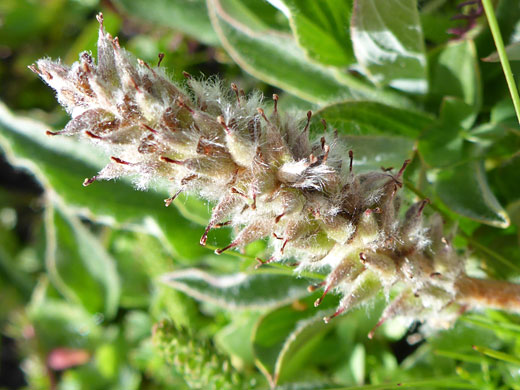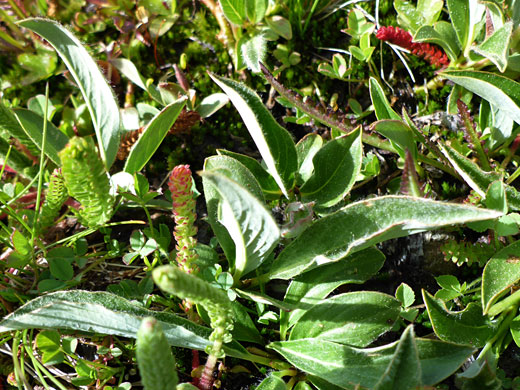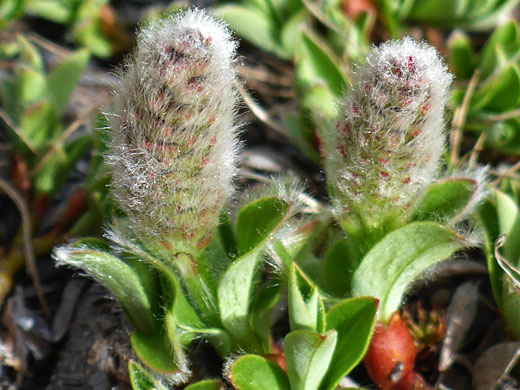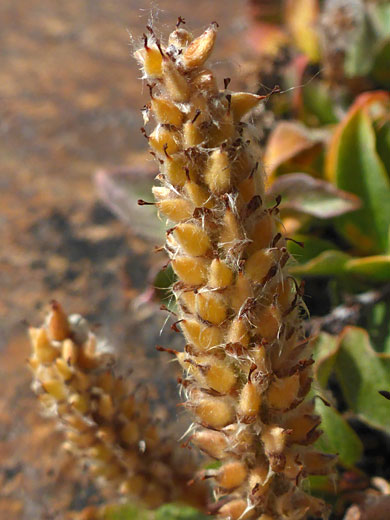Common name:
Rock willow
Family:
Scientific name:
Salix petrophila
Main flower color:
Range:
Scattered areas of the Rocky Mountain states and all states to the west, except Arizona
Height:
Up to 4 inches - grows along the ground
Habitat:
Tundra, meadows, open woodland, talus slopes; from 5,500 to 13,000 feet
Leaves:
Elliptic to obovate or oblanceolate, up to 1.7 inches long and 0.8 inches wide
Season:
July to August
Salix petrophila is one of the smallest willow species, just a few inches tall, growing in exposed, high elevation locations, mostly above the treeline. Branches are brown or reddish, sometimes somewhat shiny, and hairless. Branches grow along the ground. Leaves are attached by stalks up to half an inch long, and their blade is between 2 and 4 times as long as wide. Leaf tips may be pointed or rounded. Leaf margins are flat and untoothed. Either surface of the leaves may be pilose hairy, or nearly hairless.
The inflorescences are short, narrow, spikes - catkins - which contain either stamens (which have white filaments and reddish anthers), or light green pistils. The catkins are up to 2 inches long (pistillate), or 1 inch (staminate). The fruits are reddish-green capsules, up to a quarter of an inch long, pilose hairy, and arranged in a dense spike; they open to reveal a mass of fluffy seeds.
The inflorescences are short, narrow, spikes - catkins - which contain either stamens (which have white filaments and reddish anthers), or light green pistils. The catkins are up to 2 inches long (pistillate), or 1 inch (staminate). The fruits are reddish-green capsules, up to a quarter of an inch long, pilose hairy, and arranged in a dense spike; they open to reveal a mass of fluffy seeds.
All Contents © Copyright The American Southwest | Comments and Questions | Contribute | Site Map










